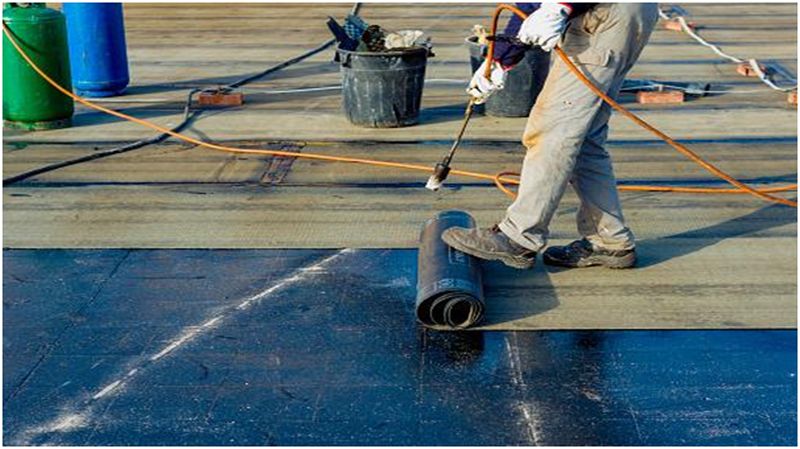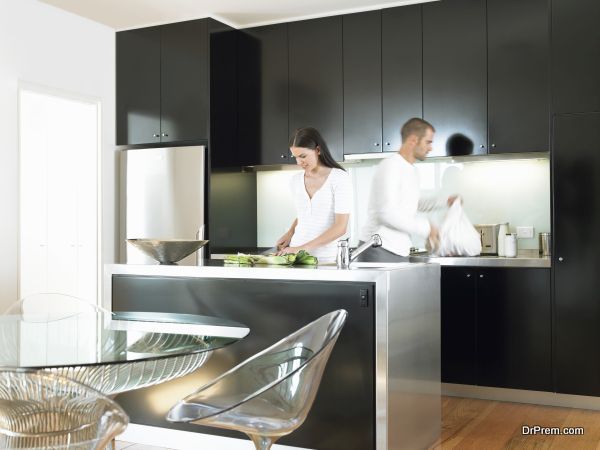Flat roofs have become increasingly popular in recent years, thanks to their modern design and space-saving benefits. But with so many different flat roofing materials available, it can be challenging to choose the right one for your home. In this article, we’ll explore the pros and cons of different flat roofing materials, including felting roof material, so you can make an informed decision.
Felt roofing
Felt roofing is a traditional roofing material that has been used for many years. It’s made of a fiberglass base, which is coated with bitumen or tar to create a waterproof layer. Felt roofing is a cost-effective option that’s easy to install, making it a popular choice for homeowners on a budget. It’s important you do thorough research to find out more about felt roof costs.However, it’s not as durable as some other flat roofing materials, and it may require more maintenance over time. Roof felt repairs is an extremely popular option when you have a minor issue across a part of your roof rather than replacing the entire roof itself.
Pros:
- Cost-effective
- Easy to install
- Provides good insulation
- Can be repaired easily
Cons:
- Not as durable as other flat roofing materials
- Can be prone to leaks and damage
- May require more maintenance over time
EPDM
EPDM (ethylene propylene diene monomer) is a synthetic rubber material that’s commonly used for flat roofs. It’s lightweight, flexible, and easy to install, making it a popular choice for DIY enthusiasts. EPDM roofing is also incredibly durable, with a lifespan of up to 50 years, making it a good long-term investment. However, it’s more expensive than felt roofing, and it may require professional installation.
Pros:
- Durable and long-lasting
- Lightweight and flexible
- Resistant to UV radiation and weathering
- Easy to repair
Cons:
- More expensive than felt roofing
- Requires professional installation for best results
- Can be punctured by sharp objects
PVC
PVC (polyvinyl chloride) roofing is another synthetic material that’s commonly used for flat roofs. It’s made of a plastic membrane that’s designed to be durable, flexible, and resistant to weathering. PVC roofing is an excellent choice for homes in areas with extreme weather conditions, such as high winds or heavy rain. However, it’s more expensive than felt roofing and may require professional installation.
Pros:
- Durable and long-lasting
- Resistant to weathering and UV radiation
- Easy to install
- Low maintenance
Cons:
- More expensive than felt roofing
- Can be punctured by sharp objects
- May require professional installation for best results
TPO
TPO (thermoplastic olefin) roofing is a newer material that’s gaining popularity in the UK. It’s made of a synthetic material that’s designed to be durable, flexible, and resistant to weathering. TPO roofing is also easy to install and low maintenance, making it a good option for homeowners who want a hassle-free solution. However, it’s more expensive than felt roofing and may not be as widely available as other materials.
Pros:
- Durable and long-lasting
- Resistant to weathering and UV radiation
- Easy to install
- Low maintenance
Cons:
- More expensive than felt roofing
- May not be as widely available as other materials
- May require professional installation for best results
Green roofs
Green roofs are becoming increasingly popular in the UK, thanks to their eco-friendly benefits and aesthetic appeal. They’re made of a layer of vegetation that’s grown on top of a waterproof membrane, creating a living roof that provides insulation and reduces runoff. Green roofs can be costly to install, but they offer many benefits, including improved air quality and reduced energy costs.
Pros:
- Environmentally friendly
- Aesthetically pleasing
- Excellent insulation
- Improved water management
Cons:
- More expensive than other flat roofing materials
- Can be heavy, requiring additional structural support
- Requires specialized installation and maintenance
- Conclusion
Choosing the right flat roofing material for your home depends on a variety of factors, including your budget, climate, and personal preferences. Felt roofing is a traditional and cost-effective option, but it may not be as durable as some other materials. EPDM, PVC, and TPO are all synthetic materials that offer increased durability and longevity, but they can be more expensive and may require professional installation. Green roofs are an eco-friendly option that provides many benefits, but they can be costly and require specialized installation and maintenance.
Ultimately, the key to choosing the right flat roofing material for your home is to consider your specific needs and priorities. Whether you’re looking for a cost-effective option or a long-lasting investment, there’s a flat roofing material that’s right for you. It’s important to work with a trusted roofing professional who can help you navigate the options and make an informed decision. With the right flat roofing material, you can enjoy the benefits of a modern and stylish roof that provides protection and peace of mind for years to come.
Article Submitted By Community Writer




